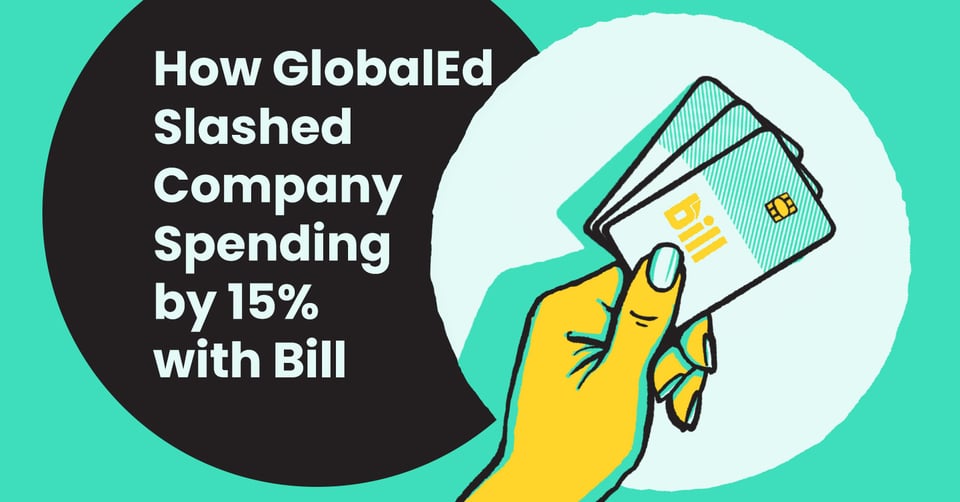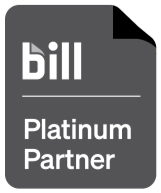
Traditional bank debit cards don’t allow you to get rewards while reducing your debt. Cash cards from partners like Divvy and Brex can give you the benefits of a credit card, without carrying a balance from month to month. If you're looking for alternatives to standard corporate cards or want business cash management solutions, then keep reading.
Source: The Financial Brand
Most small business owners demand streamlined, intuitive finance products . . . and then settle for outdated solutions at work. But that’s changing. Only 9% of small business owners say they’re satisfied with their current bank’s business offerings.
Commercial banks are struggling to stay relevant as scrappy and creative fintech (“financial technology”) solutions pop up to replace their offerings, one feature at a time.
7 Benefits of alternative cash management tools:
1. Improve cash flow
Maximize your money’s movements in and out of the business. This generation’s suite of tools makes it possible. Take spending cards, for instance. Today’s best small business credit cards offer around 15.3% APR (and no annual fee) or give you 0% APR in exchange for the promise that you’ll pay your full balance when you receive your statement (usually 60 days later).
These new credit cards help your business build credit and protect your organization against fraud, just like traditional credit cards, but with the creative flexibility you need to operate with agility. And a few, like Brex, require no personal guarantee from you, the business owner.
Likewise, today’s debit or cash cards liberate you and your team from cash and checks. The difference here is that these spending cards give you budgetary controls, letting you spend only what’s available and nixing the risk of falling too deep into debt. Now, both card types—credit and debit—offer rewards that can motivate you to use them even more.
Brex users can also monitor cash outflows from payroll payments by integrating their cash account with Gusto.
Corporate credit cards |
Small business credit cards |
|
|---|---|---|
Eligibility |
Available to businesses with $4 million + annual revenue, $250,000+ annual expenses, and 15+ cardholders. | Available to businesses and sole proprietors with a good personal guarantee, regardless of age or size. |
Liability |
Liability can be held solely with the business or shared jointly with all authorized cardholders. | Liability rests solely with the company owner who gave the personal guarantee |
Usage |
Individual cardholders can have set limits, while built-in analytical tools provide greater spending control. | Offers less control than corporate credit cards, although individual cardholders can still have credit limits. |
Costs |
No APR but card costs can be as high as $100 per card, with a minimum of 15 cardholders. | An average APR of 15% can apply, but additional cards are usually free of charge. |
Rewards |
Less of a focus on rewards, which are usually kept by the company, although there is a higher level of customer service. | Rewards are a key selling point, and although there is less of a focus on customer service. |
Source: Brex
2. Capture spending data at the transactional level
Web-based financial products enable you to collect and parse information like never before. This is exciting, especially for a decision-maker who needs accurate, real-time information to steer the ship. One business owner describes his early financial uncertainty as a crippling stopper. “I didn’t know where my money was going,” he recalls. “I was afraid of spending money and very insecure about investing money to grow my business.”
Next-generation tools that seize transaction data solve these issues by snagging the information automatically. It frees up team members from having to “send in their numbers” and liberates administrative folks from inputting the figures into a database.
Today, you can grab a tool with automated optical character recognition (OCR) technology that can instantly and accurately scan your receipts. The computerization replaces the data collection and input that humans used to do. The instantaneousness of this performed work gives immediate visibility, which is a unique benefit of its own: A recent McKinsey report shows that
57% of finance executives report being “dissatisfied” with the lack of visibility into their company’s spend.
Examples of this type of tool include Botkeeper and Neat.
Source: Neat.com transaction matching tutorial
3. Increase financial visibility
Harnessing the inflow of data is just the beginning. Now that your transactions’ details are being collected, you can call up the information and manipulate it to answer a variety of right-now questions.
Until now, you had to wait for the monthly accounting close to see your financial position. And while those regular financial reports are still beneficial, each bank-disrupting tool has a “dashboard” of relevant metrics. These depict real-time information, just like the dashboard of a vehicle, that—when added together—shows you how you’ll reach your destination. Dialing back (or ratcheting up) one activity or another adjusts your direction or speed and, ultimately, changes where your business ends up.
Data analysis has always been a thorn in the paw of decision-makers. Even now, 66% of financial professionals say they don’t have time to analyze their data. Each tool’s creator knows this, and they’re in a race to ease that pain.
Software publishers refer to your bank statements and financial reports as “dead data.” They’re a snapshot of information about the past. Future-fluent products show real-time, granular data as it happens. It’s “alive” and immediately actionable.
4. Customize permissions and approvals
Conventional, old-school business bank accounts don’t let you control team members’ spending on a granular level. And they definitely don’t let you change those permissions at will or remotely via mobile app.
Empower employees while controlling spend
Empowering team members increases their confidence and commitment to goals, according to Harvard Business Review experts. A new study from Divvy found that after distributing spending cards to team members, companies experienced a 25% jump in employees who said the organization empowers its people.
Source: Divvy survey
Create enforceable budgets
Many small business owners ace budget planning but struggle when it comes to the complexities and nuances of execution. Why? Because people—with individual motivations, goals, needs, and values—implement the plan. Imagine an execution with no more email conversations, Slack threads, or meetings to recalibrate when surprises arise. Today’s new tools can give your business exactly that.
Picture your employee at the supply store. She opens her business spending mobile app, categorizes the transaction, and applies it to your budget plan before she swipes her card—as opposed to a week later when expense reports come due and questions arise.
With fintech solutions like non-bank corporate cards and cash management accounts, you involve employees in budget decisions in the planning phase, then use a mobile spending solutions app to empower them to execute the spending plan.
5. Get rewards
Most non-bank business financial tools give you perks and prizes. And that jives nicely with small business owners since 62% of them feel their bank offers no benefits to their business beyond what their personal banking account provides. From airline miles to rideshare discounts and cash back, these solutions providers have studied what today’s small business leader needs, and they’ve delivered. For example. Brex customers can use their points to get gift cards from Amazon and Airbnb.
By contrast, banks do the opposite, charging fees that often negate any interest earned.
The average small business customer pays $451 per year in banking fees.
The new fintech mobile apps disrupting those banks usually offer a free plan, which is perfect for novice users and those just comparing tools.
To get an idea of the types of rewards available, check out the rewards users get when they use Divvy, Shopify Balance , Brex, and Stripe.
6. Automate your information organization and storage
When you’ve digitized your financial processes, you can easily automate away other administrative tasks like document organization and data retrieval.
Back-office process experts at ProSource estimate that small business owners spend $14,000 per employee per year on manual document retrieval. Analysts at Docuware cite a report that puts the estimate closer to $20,000. And digitization evangelists at MES Ltd. have a whole list of other costs of handling paper. Today’s financial technology tools eliminate this leakage with data extraction, categorization, and auto-matching (which we’ve already seen). Most, however, go beyond to incorporate encrypted storage and advanced search and recall capabilities.
Best of all, these tools work together. They use APIs (“application programming interfaces”) to partner with one another and integrate into a unique-to-you solution. For a full explainer on how this works, check out the understandable guide from the web authentication gurus at Auth0.
Meanwhile, to grasp how it works in your daily operations, imagine a team lead getting an automatic ping on Slack when her team member exceeds her monthly allocation. Or envision the user who customized these tools receiving an automatic email sent to request a review once an invoice has been generated.
7. Eliminate reimbursements
Telling employees to use their own money to pay for business expenses (even if you plan to reimburse them) is an outdated, reactive practice that can and should be retired. Think about it this way: Having employees pay for business expenses out of pocket puts them in the bank’s position.
“Not only do expense reimbursements create inefficiencies across the business; they also hurt your employee experience.”
-Peter Nesbitt, VP of finance at Teampay.
And the burden shows. A full 43% of workers say the combination of factors involved (using their own money, waiting for reimbursement) causes them stress.
Plus, the administrative burden is excessive and no longer necessary. Researchers at Levvel have found that 35% of companies still require expense reports involving paper receipts. The same report shows that the antiquated expense-reporting process costs the typical 20-person business over $18k per year.
Sadly, research shows that smaller businesses tend to bear the brunt of this lag, adopting cloud-based tech at a lesser rate.
Source: PayStream Advisors Travel and Expense Management Report
These woes have been tolerated for lack of alternatives—until now. Agile expense management solutions like Zoho Expense, Expensify, and Divvy are filling the gap.
New and agile cash management products aren’t just for personal finance
Analysts at Boston Consulting Group say the reason a person can run their personal financial life without traditional banks is because of agile and innovative thinking. And now, finally, business banking products are starting to catch up.
Early adopters of these new business finance solutions (like cash management accounts and expense management apps) will gain what Harvard Business Review researchers call the “first mover advantages.” These advantages can help you reach your goals and outperform rivals who still insist on trusting obsolete business banking systems.
Not sure where to start or which products are best for you? A free 30-minute consultation with our outsourced business accountants can help. Schedule one today by calling us at 855-694-4648.












.png)




